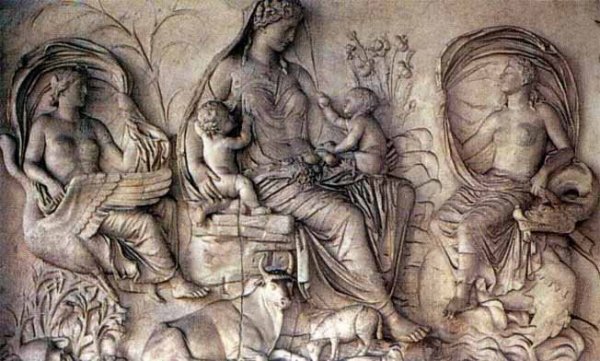Temple of Bona Dea
Introduction
Bona Dea (Good Goddess) was a divinity in ancient Roman religion. She was associated with chastity and fertility in Roman women, healing, and the protection of the state and people of Rome. According to Roman literary sources, she was brought from Magna Graecia at some time during the early or middle Republic, and was given her own state cult on the Aventine Hill.
Her rites allowed women the use of strong wine and blood-sacrifice, things otherwise forbidden them by Roman tradition. Men were barred from her mysteries and the possession of her true name. Given that male authors had limited knowledge of her rites and attributes, ancient speculations about her identity abound, among them that she was an aspect of Terra, Ops, Cybele, or Ceres, or a Latin form of the Greek goddess "Damia" (Demeter). Most often, she was identified as the wife, sister, or daughter of the god Faunus, thus an equivalent or aspect of the nature-goddess Fauna, who could prophesy the fates of women.
The goddess had two annual festivals. One was held at her Aventine temple; the other was hosted by the wife of Rome's senior Annual Magistrate for an invited group of elite matrons and female attendants. The latter festival came to scandalous prominence in 62 BC, when the politician Publius Clodius Pulcher was tried for his intrusion on the rites, allegedly bent on the seduction of Julius Caesar's wife, whom Caesar later divorced because "Caesar's wife must be above suspicion". The rites remained a subject of male curiosity and speculation, both religious and prurient.
Bona Dea's cults in the city of Rome were led by the Vestal Virgins, and her provincial cults by virgin or matron priestesses. Surviving statuary shows her as a sedate Roman matron with a cornucopia and a snake. Personal dedications to her are attested among all classes, especially plebeians, freedmen and women, and slaves. Approximately one third of her dedications are from men, some of whom may have been lawfully involved in her cult.
Roman Cultists
